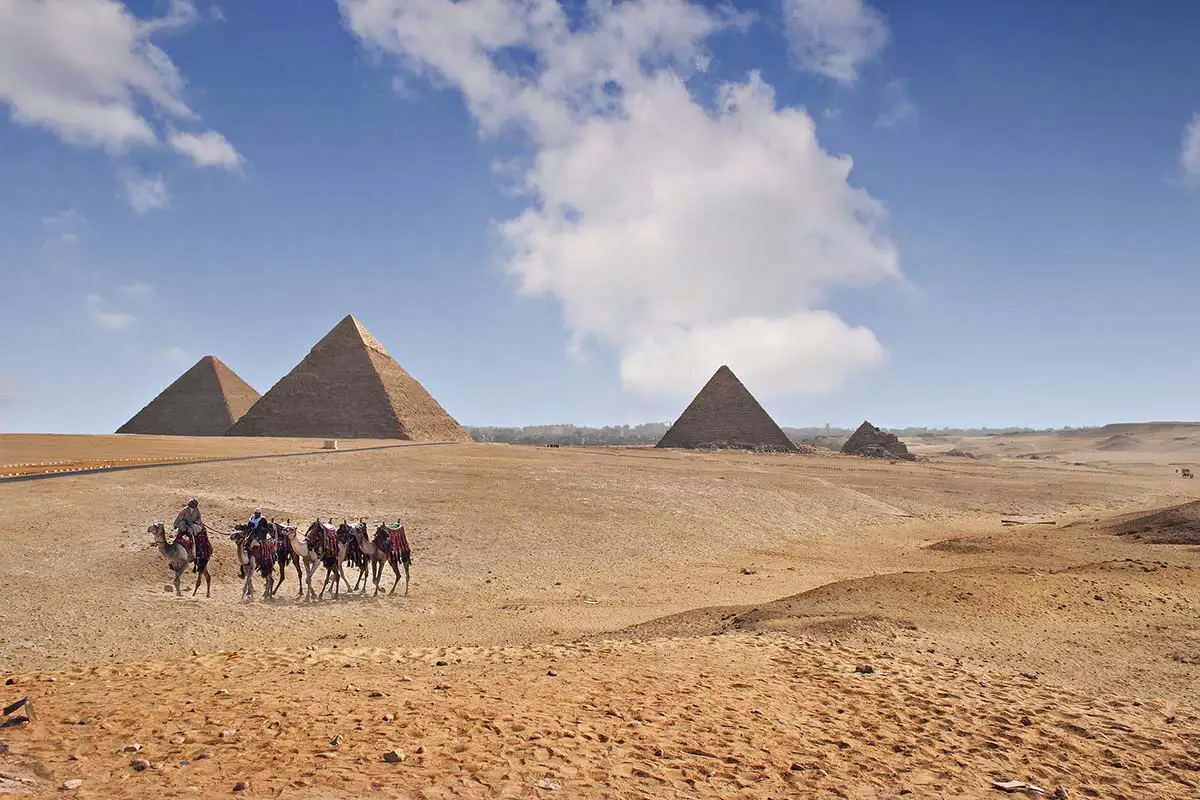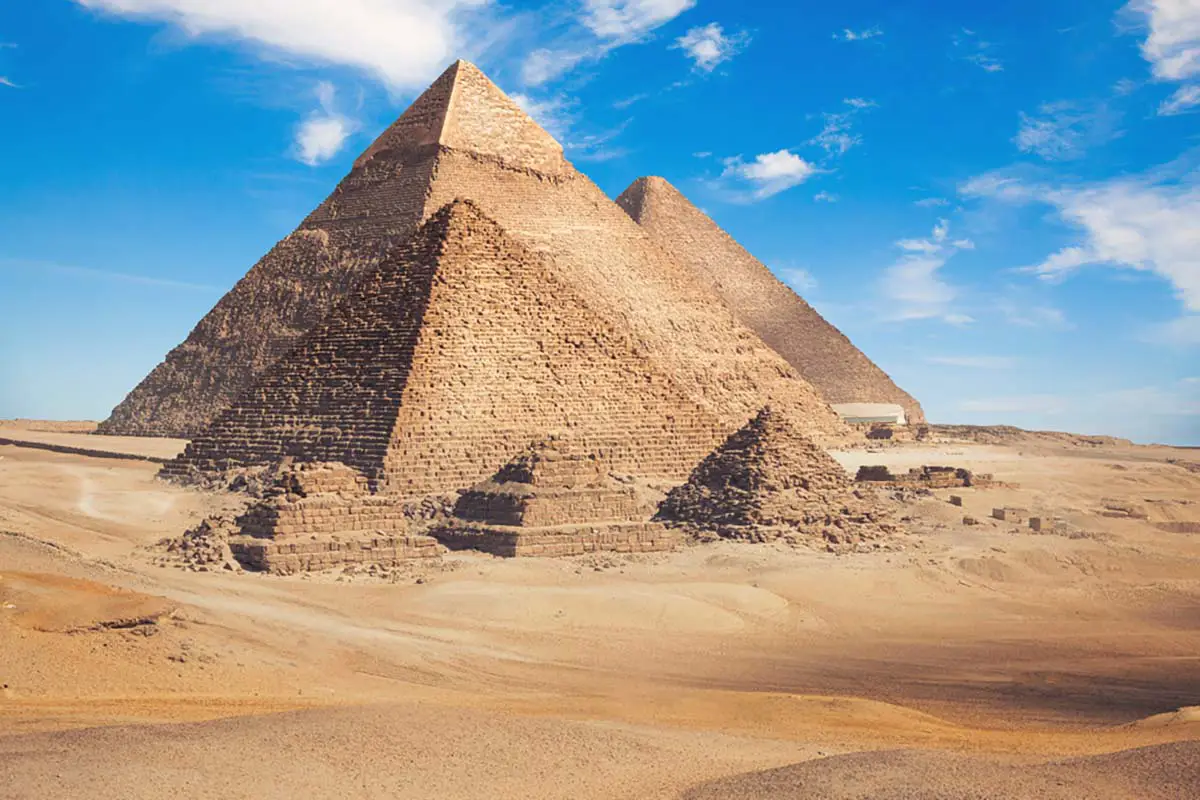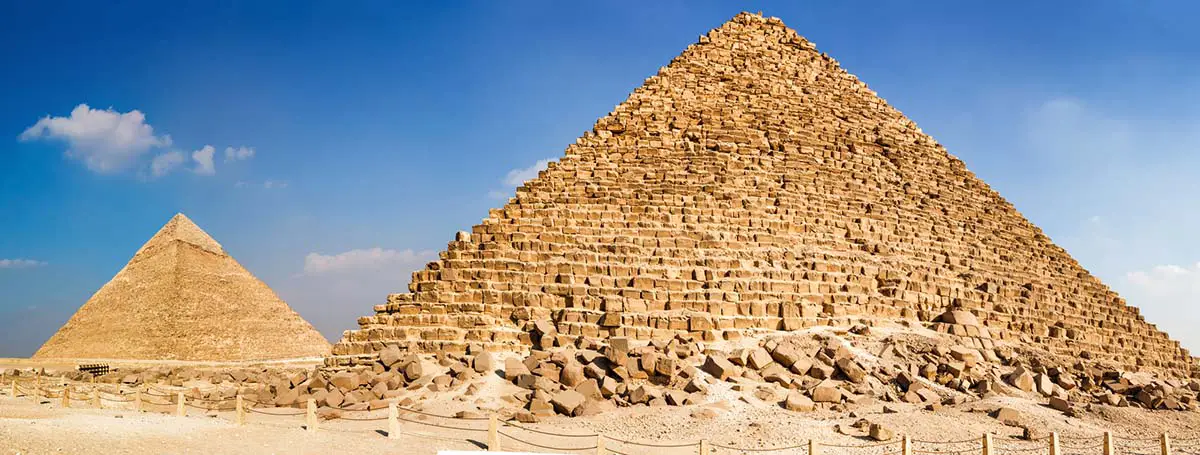
Egypt has always been an enchanting travel destination, offering a rich tapestry of history and wonders. Amidst the backdrop of its recent political challenges, Egypt's allure remains undiminished for globetrotters worldwide. A visit to Egypt is incomplete without experiencing the grandeur of the Pyramids of Giza and the enigmatic Sphinx, which stand as enduring symbols of human achievement and mystery.
The Secrets of the Giza Plateau
As thousands of years have passed since the pyramids were first erected on this sacred ground, it's disheartening that many visitors rush through the Giza plateau, nestled between the bustling city and the ever-shifting sands of the Western Desert. Yet, Egypt still guards countless enigmas waiting to be unravelled.
The Giza Pyramid Complex – A Journey Through Time
Archaeological evidence suggests that the three primary pyramids on the Giza plateau were constructed approximately 4,500 years ago as monumental tombs for the Fourth Dynasty pharaohs. Among them, the ‘Great Pyramid,' also known as the Pyramid of Khufu or Cheops, stands as the sole survivor of the original Seven Wonders of the World—a testament to its awe-inspiring resilience.
Khufu, who reigned from about 2551 to 2528 BCE, commissioned this marvel. With a height of nearly 140 meters (initially taller before some stones were removed), an inclination angle of approximately 52 degrees, and a colossal volume of nearly 2.6 million cubic meters, the Great Pyramid is an architectural marvel that defies the constraints of its era.
The Great Pyramid's Astonishing Construction
To grasp the enormity of this achievement, consider that an astounding 2.3 million stone blocks were meticulously employed in the pyramid's construction. Some of the internal granite beams within this mammoth structure weigh a staggering 50 to 80 tonnes. The herculean endeavour spanned approximately two decades, an accomplishment that continues to baffle contemporary observers.
In his comprehensive book, “The Complete Pyramids,” Egyptologist Professor Mark Lehner rightly points out that “such statistics…never cease to astound.”
Pyramid Construction and Enigmatic Precision
One of the enduring mysteries shrouding the Great Pyramid is the astonishing precision with which it was crafted. The base of the pyramid maintains a level variance of merely 2.1 cm, while the greatest difference in the length of the four sides measures a minuscule 4.4 cm. This remarkable accuracy, considering the rudimentary tools available at the time, fuels speculation about the pyramid's purpose.

The Illusion of Khafre's Pyramid
On the southern side of the Great Pyramid stands a modern museum housing one of Khufu's royal sailing barques. Discovered in 1954 in a sealed pit in 1,224 separate pieces of cedarwood, the 43.3-meter-long vessel was painstakingly reassembled over many years and then housed in the boat-shaped museum just meters from where it was found.
Khafre, one of Khufu's seven sons, built the second largest of the three main Giza pyramids. From a distance, it appears to be bigger than Khufu's pyramid, but in fact, this is merely an illusion created by the fact that Khafre's pyramid stands on a higher plateau than that of Khufu. The distinguishing feature of Khafre's pyramid is the intact outer casing of fine Tura limestone visible on its summit.
The Pyramid of Menkaure
Menkaure's pyramid is by far the smallest of the trio at 204 feet and wasn't opened until 1837, even though a huge hole was made in one side in AD 1196. Unfortunately, the beautiful sarcophagus discovered in the burial chamber by Richard Vyse was later lost at sea while being transported to England.

Great Sphinx of Giza – An Age-Old Enigma
And finally, to the most enigmatic of all the Giza monuments; the Great Sphinx, created from the body of a lion and the head of a man. It stands sentry-like in front of Khafre's pyramid and is believed by mainstream Egyptologists to have been created for this pharaoh. However, some geologists, most notably Dr. Robert M. Schoch (USA), believe the Sphinx was built not around 2,500 BC but thousands of years earlier.
Unlike other structures on the plateau, the Sphinx was not built from individual blocks of stone but carved from the limestone bedrock. Sadly, the Great Sphinx is not surviving well in the elements, and even though much focused attention has gone into restoration attempts, none of these has helped the situation, and thus this magnificent monument is sadly still crumbling.
The King's Chamber – An Eerie Encounter
Any traveller setting foot on the Giza plateau should not miss the opportunity to venture into the Great Pyramid, unless, of course, they suffer from claustrophobia. Modern visitors enter through a rough-cut tunnel, a stark contrast to the impressive original entrance still visible. This tunnel, believed to have been dug by either tomb robbers or early archaeologists, guides you to an extraordinary experience.
The Grand Gallery: A Staggering Feat of Ancient Architecture
At the end of the tunnel, an awe-inspiring sight awaits—a passage ascends to reveal the Grand Gallery, with its corbelled walls gracefully rising to a flat ceiling nearly nine meters above. This architectural marvel defies logic when we consider the rudimentary tools believed to have been at the disposal of ancient builders over 4,500 years ago.
The King's Chamber – A Silent Witness
The journey through the Grand Gallery culminates in the King's Chamber, once secured by a portcullis system consisting of three sliding granite slabs embedded into the walls of the adjoining ante-chamber. Sadly, only a shattered and empty red granite sarcophagus remains within. It is believed that Khufu's tomb fell victim to robbers millennia ago, with the heavy lid of the stone coffin bearing the scars of their intrusion.
As you stand within these ancient chambers, you can't help but be transported back in time, captivated by the mysteries and marvels of Egypt's most iconic treasures. A visit to the Giza Pyramids is not just a tourist checklist item but an immersion into the enigmatic depths of human history, a journey that continues to captivate travellers from across the globe.
Archaeological Sites: Beyond the Giza Plateau
Tourists are spoilt for choice in and around Cairo as far as archaeological sites are concerned.
- Djoser's Step Pyramid in Saqqara: A remarkable structure with a unique design.
- Unas' Pyramid: Built around 2375 B.C., it features beautifully carved, blue-painted hieroglyphic texts. https://discoveringegypt.com/pyramids-temples-of-egypt/step-pyramid-at-saqqara/
- Dahshur: Explore Sneferu's Bent and Red Pyramids, both built around 2600 B.C.
- Mit Rahina: Visit the Memphis archaeological area, where a colossal statue of Ramesses II (19th Dynasty) stands tall.
- Egyptian Museum: Located in Cairo, this world-famous museum houses around 150,000 artefacts, including the ‘treasures' of Tutankhamun and the royal mummies.
While it is assumed that archaeologists have unearthed most of what is likely to be left of Ancient Egypt, Dr Zahi Hawass, Secretary-General of Egypt's Supreme Council of Antiquities, suggests otherwise: “Egypt still holds many mysteries!” So, for those who seek to delve into the past, Egypt's ancient wonders are an endless source of fascination and intrigue.






